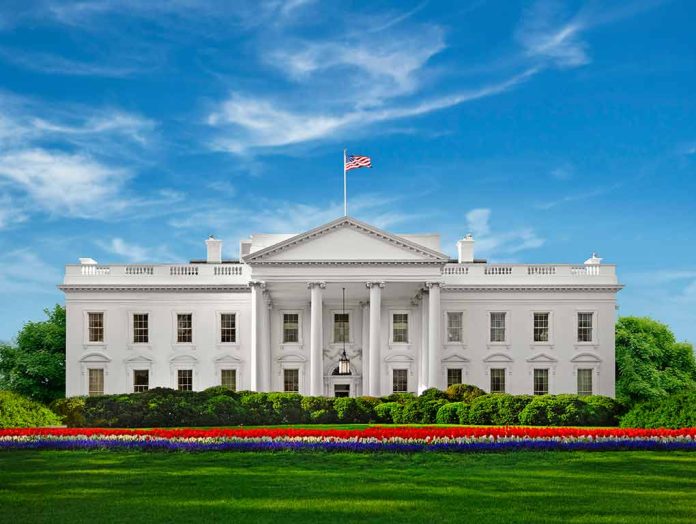
President Trump’s Liberation Day tariffs, set for April 2nd, promise to reshape the economic landscape, leaving industries and consumers eagerly anticipating the impacts.
Key Takeaways
- President Trump will implement “Liberation Day Tariffs” on April 2nd.
- These tariffs aim to reduce reliance on foreign goods and match duties charged by other countries.
- Economists warn the tariffs could disrupt U.S. industries and inflate consumer prices.
- White House officials suggest tariffs could raise substantial federal revenue.
- Countries affected by tariffs, including Canada and the European Union, plan retaliatory measures.
Understanding the Tariffs
President Trump labeled April 2nd as “Liberation Day,” introducing tariffs intended to reduce the U.S.’s dependence on imported goods. Targeting countries such as the European Union, South Korea, and Brazil, the tariffs aim to be “reciprocal” toward counterparts’ duties. With guidance from trade advisers, the tariffs could potentially raise $600 billion annually. Products targeted include automobiles, auto parts, and steel imports. Experts voice concerns about potential supply chain disruptions and consumer price increases.
White House trade adviser, Peter Navarro, explained on “Fox News Sunday” that auto tariffs alone are projected to generate $100 billion annually. As a counterbalance, the administration is negotiating a tax bill aimed at extending the 2017 tax cuts. Proposed enhancements look to include tax credits for buyers of American vehicles. However, Trump’s strategy excludes current exemptions, reflecting a firm stance on reshaping trade relationships.
Economic Considerations
While the White House anticipates substantial financial benefits, economists forecast potential challenges. An estimated 25% tariff on oil and gas imports, alongside newly enforced vehicle and part tariffs, suggests a complex economic climate. Increased costs could exacerbate inflation and unemployment rates, prompting recession concerns, as noted by financial institutions like Goldman Sachs.
Economist Ernie Goss, though supportive of parts of Trump’s economic approach, notes that tariffs may reduce consumer spending and strain the economy. Retaliation from other countries, like the European Union’s planned mid-April implementation against U.S. goods, exacerbates potential economic volatility.
Strategic Impacts for Businesses
Domestic businesses face strategic decisions in navigating these impending economic changes. Industries deeply reliant on global supply chains, such as automotive manufacturing, must prepare for financial pressures tied to increased import costs. Some companies may benefit, like those in vehicle refurbishment due to prolonged auto purchase cycles.
Industries like pharmaceuticals, lumber, and electronics may also face pricing impacts if threats of extended tariffs materialize. For businesses and consumers, strategic adaptability in managing increased costs and evaluating market opportunities remains crucial.
Sources
1. Trump has dubbed April 2 ‘Liberation Day’ for his tariffs. Here’s what to expect
2. President Trump’s ‘Liberation Day’ tariff plan sparks economic concerns














